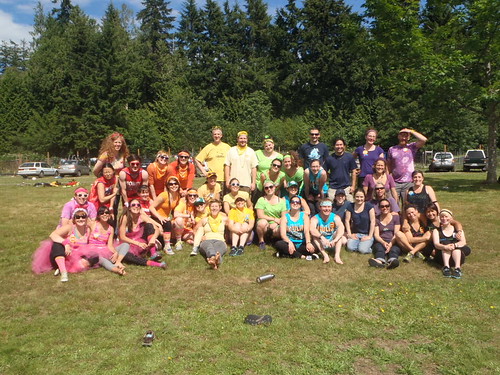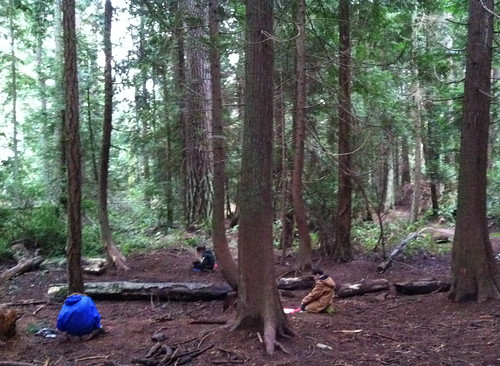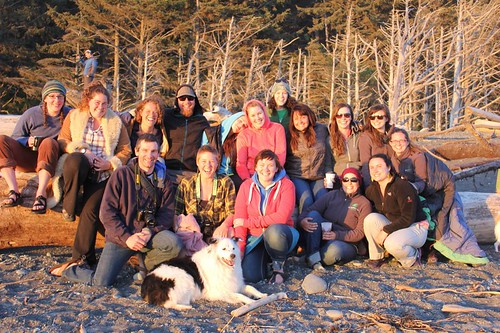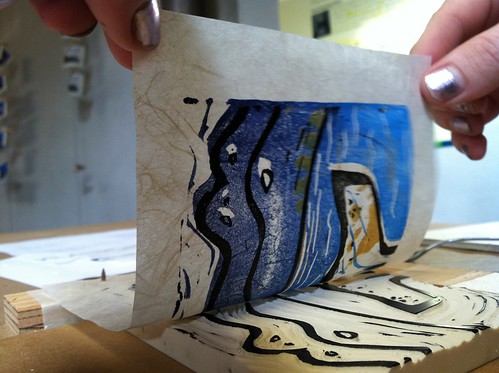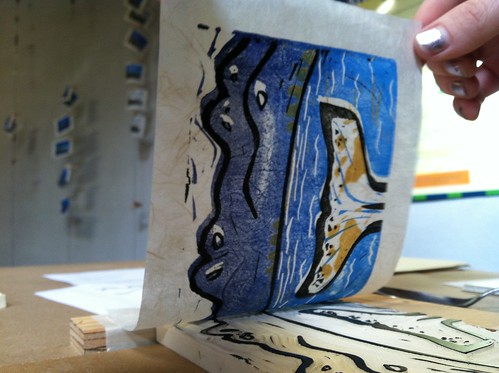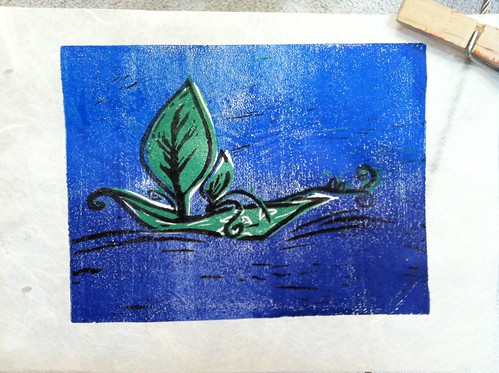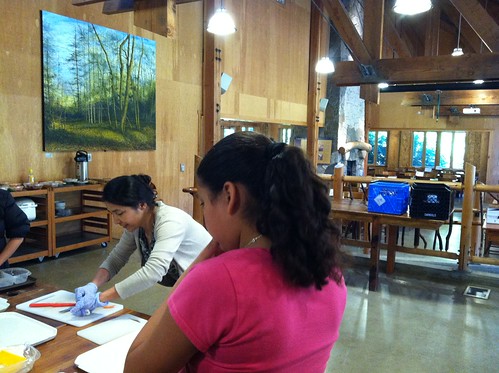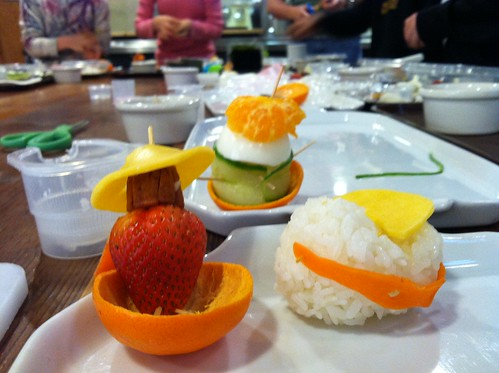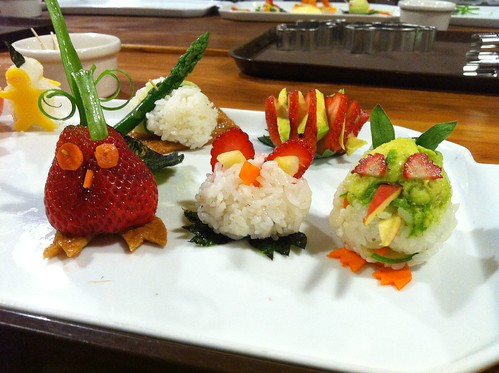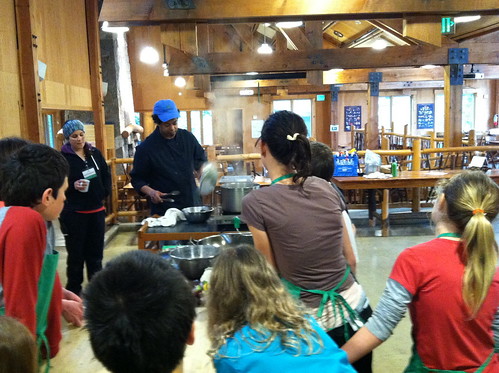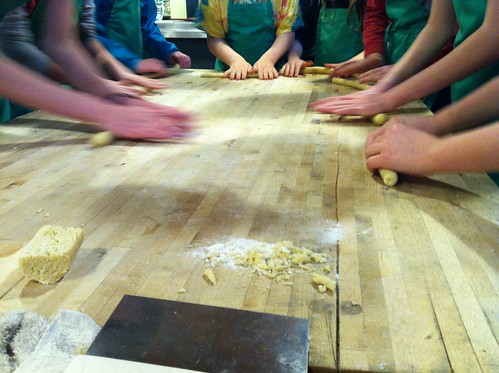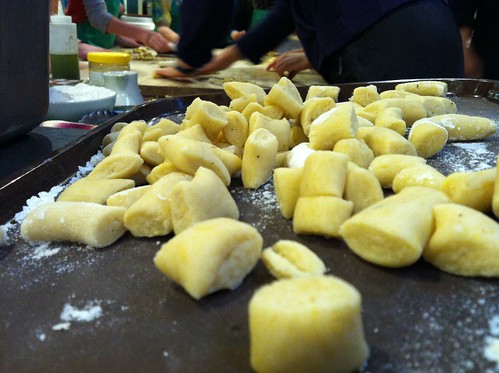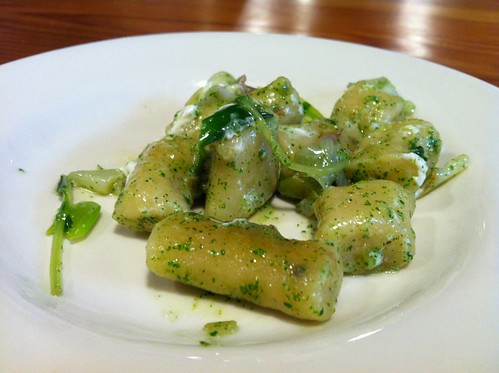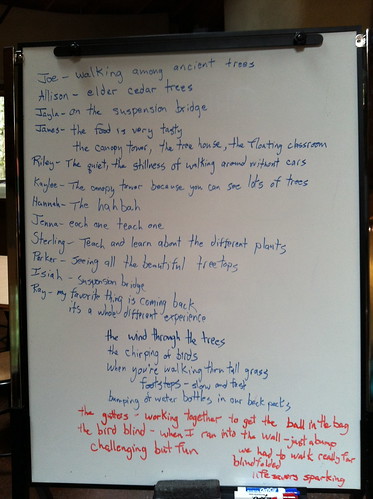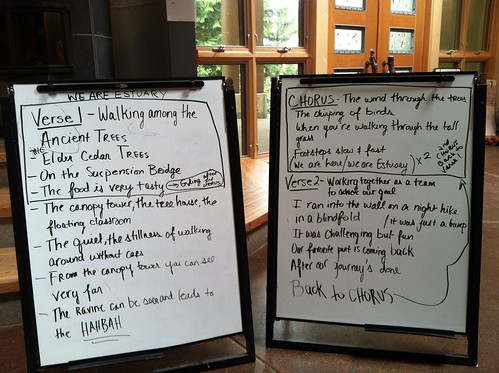In early September, we were given a tourist test in our
Ecology and Natural history class. It
was a simple test, and it succeeded in opening our eyes to our lack of knowledge of our natural surroundings.
Take the test for yourself to see what you know:
- Name the shrub nearest to your front door.
- What are the trees you can see from your door?
- What direction does your window face? Your bed?
- What is the current moon phase?
- What plants or animals here (or in your area) may hurt you?
- What species of trees would you want to avoid in a wind storm?
- What /where is the nearest stream/creek from your front door?
- List the trees and plants here (or in your area) that you can identify with confidence.
- Write a service that those species provide.
- List the birds and wildlife that you can identify with confidence.
When I first answered these questions, I listed “unknown”
for six of the ten questions, but after several months at Islandwood, I have
significantly more detailed answers to provide to each question. Knowing the answers isn't the real eye opener
though; it is the realization that there is an abundance of diversity around
us.
Being more knowledgeable led to an unexpected increase in awareness and understanding about the network of life around our human
communities. I already sought to protect the earth, but now I had more connection because the earth was
taking a specific and personal shape. Suddenly, there weren't just trees. There were Red Aldors, Big Leaf Maples,
Redcedars, Western Hemlocks, and Douglas Firs, and they did more than generically provide shade and shelter because they
have unique characteristics that distinguish them from one another.
This is where stewardship arises. Once the connection between the natural world
and the cultural world is found, stewardship has meaning. Islandwood has done a lot to help me build
the bridge between my world and the natural world, and the word stewardship
carries more weight as an accomplishable action rather than a fantastic ideal.
--Jennifer












.jpg)
.JPG)







